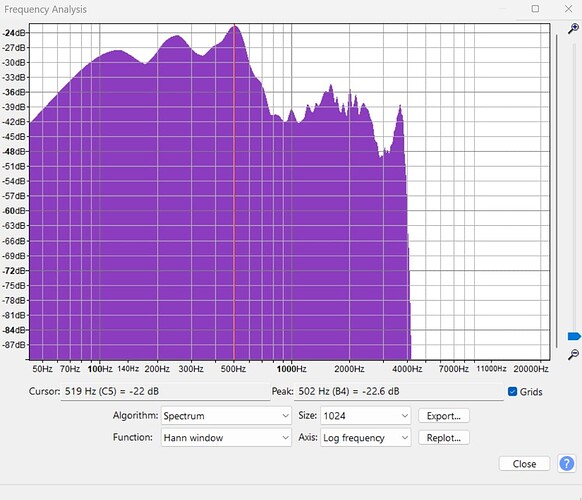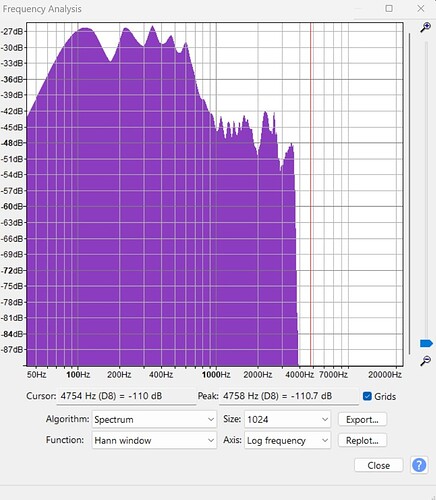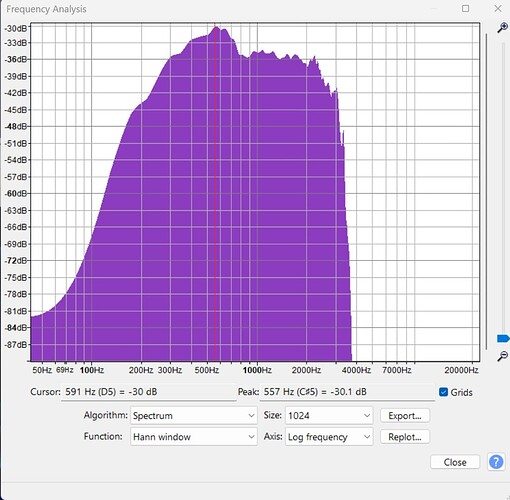Below are audio spectrum plots of Allstar, DMR, and Dstar modes. Audio plots came from the Audacity audio editor software. The Allstar node was radioless (iaxRpt software) running on a ASL 2.0 server. DMR audio was taken from the Brandmeister Hoseline site. The Dstar audio came from an IC-705 connected to the PC via USB, controlled by Doozy software. The intent was to not have any connection to the three modes via RF at the receiving end that would be restricted by the various local UHF radios/hotspots.
Allstar - Excellent Direct Audio (No RF at source or destination)
Allstar - Typical Radio Link/Repeater
DMR – Good Sounding Audio Levels (Hoseline)
DMR – Typical Audio (Hoseline)
Dstar – AMBE Dongle
Dstar – Repeater Connection
Dstar – IC-705 Echo Plot (Radio connected to PC via USB)
Audio Comments:
The no RF Allstar mode connection has the potential to sound the best along with duplex operation possibilities. Once analog Allstar mode goes through RF there is a significant cut off of low frequencies for the passing of PL tones. I like to listen to the Hoseline (DMR) site for the ability to quickly switch from active talkgroup to talkgroup. However, to my ears the graininess of the digital low frequency audio makes it hard to understand some of the QSO’s. In Chrome and Edge an audio equalizer extension can be installed. I apply a bass cut that improves the intelligibility of the audio. This is worth the tradeoff of a reduction of tonal quality. Dstar already has a bass cut that can be managed further by Icom radios with their built-in treble/bass controls for both TX and RX. Years ago, I used to have a Wires-X HRI-200 box with Fusion radios. The direct connection between two Yaesu Fusion radios in wide mode the audio quality was outstanding. There was no hint of digital graininess in the audio. It is unfortunate this C4FM wide mode cannot pass through gateways.
K3XT






